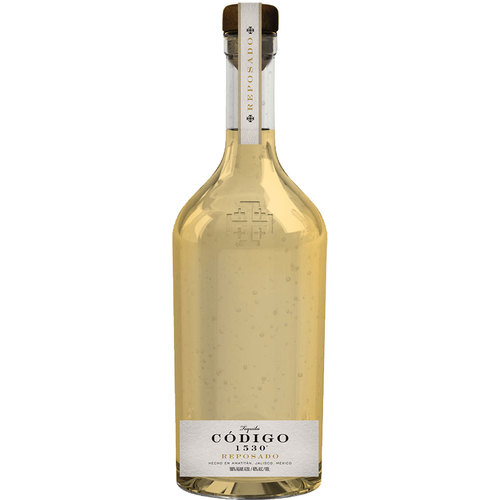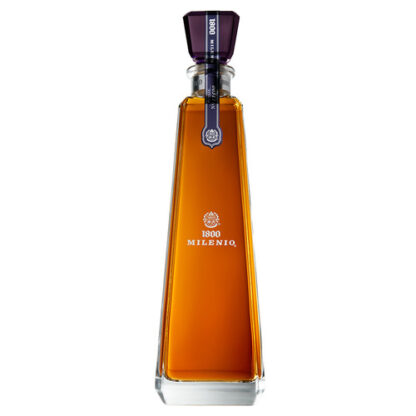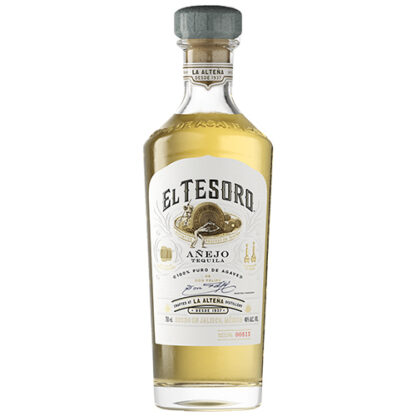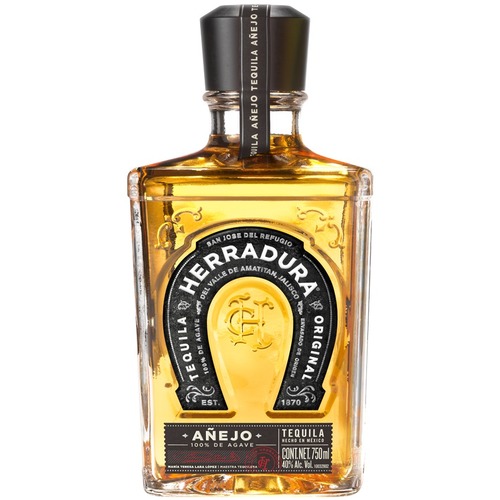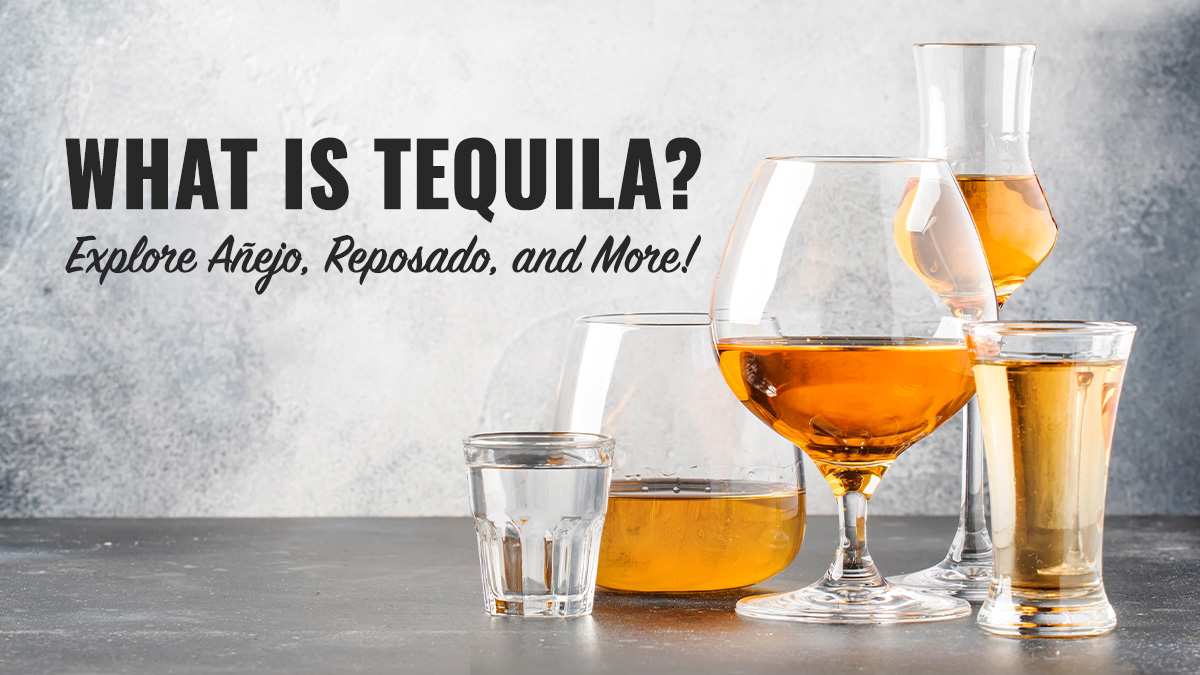
Tequila is cherished around the world and has a rich history that sets it apart from other alcoholic beverages. Originating from Mexico, tequila has grown from a local favorite to a worldwide sensation, celebrated for its unique flavor profiles and versatility. But what exactly is tequila made from, and what differentiates its various types such as Añejo, Reposado, and others? In today’s blog, join us as we dive into the fascinating world of tequila.
What is Tequila?
Tequila is a distilled beverage made from the blue agave plant, or Agave tequilana. Specifically, tequila is made from blue weber agave. This succulent thrives in certain Mexican regions, primarily in the state of Jalisco. The agave plant, with its enormous, spiky leaves, takes 8 to 12 years to mature. There are different types of tequila, including Blanco (white or silver), Reposado (rested), and Añejo (aged), each with distinct flavors and aging processes.
What is Tequila Made From? The Blue Agave Plant
Tequila is made from the blue agave plant. The heart or “piña” of the plant is harvested, then cooked to convert the complex carbohydrates into fermentable sugars through a fermentation process. The cooked agave is then mashed to extract the juice, which is fermented and distilled to produce tequila. The quality and flavor of tequila can be influenced by the region where the agave is grown, the production methods, and the aging process. Tequila is a distilled beverage made from the blue agave plant.

How is Tequila Made? The Process to Produce Tequila
Tequila is made through a multi-step process:
- Harvesting: Mature blue agave plants are harvested, and their leaves are removed to reveal the piña, the core of the plant. The first tequila distillery was built by the Marquis of Altamira in the 16th century in the town of Tequila, Jalisco, using Blue Weber Agave.
- Cooking: The piñas are cooked, usually in large ovens, to convert the complex carbohydrates into fermentable sugars.
- Extraction: The cooked piñas are crushed or shredded to extract the juice, known as aguamiel.
- Fermentation: The aguamiel is placed in fermentation tanks, where yeast is added to convert the sugars into alcohol. This process can take several days.
- Distillation: The fermented liquid is distilled, typically twice, in copper or stainless steel stills to purify the alcohol and concentrate the flavors.
- Aging (optional): Depending on the type of tequila being produced, it may be aged in wooden barrels. Blanco (silver) tequila is usually bottled immediately, while Reposado and Añejo tequilas are aged for several months to years to develop more complex flavors.
- Bottling: The final product is filtered and bottled at the tequila distillery, ready for distribution and consumption.
What is Reposado?
Reposado is tequila that has been aged in oak barrels for a period of time between two months and one year. The term “reposado”, meaning “rested” in Spanish, indicates that a tequila has had time to develop a mellower flavor compared to unaged Blanco (silver) tequila. The aging process imparts a golden color to the tequila and adds notes of oak, vanilla, and caramel, while still retaining some of the agave’s natural sweetness and character. Reposado tequila is often enjoyed neat, on the rocks, or as a premium ingredient in cocktails.
Check out some of the great reposados that Spec’s carries:
Codigo Tequila Reposado
The pure agave flavors of Blanco tequila meet the elegant complexity that comes from our distinct resting processes in Código 1530 Reposado. Rested for six months in French White Oak Napa Valley Cabernet wine barrels, our Reposado has the brightness of ripe agave and the warm undertones of whiskey.
Add to cartDon Abraham Reposado
Don Abraham Organico’s 100% organic tequila Reposado is made with blue agave plants from the top growing region in Jalisco, Mexico. The perfect combination of soil, weather, and natural elements create optimal conditions for the highest quality blue agave. Only the most mature plants are chosen by our expert growers for use in Don Abraham Organico. The entire production process is closely monitored until we achieve a natural blanco tequila, which is then aged for 9 months in authentic oak barrels for the distinct color, aroma, and flavor of reposado tequila.
Add to cartEl Tequileno Tequila Gran Reserva Reposado
Don Jorge’s deep-rooted passion for craft and quality is a true reflection in the exceptional tequila that is produced to this day. El Tequileño Reposado Gran Reserva is aged for a minimum of 8 months in American Oak and blended with a small amount of Añejo aged in American Oak. Extra attention is taken to remove the Cogollo of the agave before cooking, this is a bitter part of the plant which negatively impacts the final profile of your tequila.
Add to cartWhat is Añejo Tequila?
Añejo has been aged in oak barrels for a period of one to three years. The word “añejo” means “aged” in Spanish, reflecting the extended maturation process that allows the tequila to develop deeper and more complex flavors. During this aging period, the tequila takes on a rich amber color and acquires notes of vanilla, caramel, chocolate, and spices from the oak barrels. Añejo tequila is known for its smoothness, making it an ideal sipping tequila.
Here are a few great Añejos to explore:
1800 Tequila Milenio Extra Añejo
An expression of the finest craftsmanship. After a long and delicate aging process, the extra-aged tequila is matured for a short period in French oak Cognac barrels creating a balanced, soft, and unique flavor with notes of vanilla, red fruit and cinnamon. A perfect expression of the land that nurtures the fine Weber blue agave and the hands that craft its final liquid, Milenio is considered the best representation of 1800 Tequila.
Add to cartEl Tesoro Anejo
El Tesoro is known as “the Treasure of Jalisco”, crafted in the Highlands of Jalisco, Mexico for generations. There is magic in the soil at La Alteña distillery, our home where a community of skilled artisans use traditional methods of tequila-making to create a true treasure. A tequila with soul in every sip.
Add to cartHerradura Anejo
Aged to perfection. Tequila Herradura Añejo ages in American White Oak barrels for 25 months – an incredible 13 months beyond industry standards. The result is a remarkably smooth, amber-colored liquid with a rich flavor, leaving notes of cooked agave, toasted oak and dried fruit.
Add to cartThe Art of Tasting Tequila
Tasting tequila involves more than just drinking. Here are some steps to enhance your tequila-tasting experience:
- Appearance: Begin by examining the tequila’s color and clarity. Blanco tequilas are clear, while aged varieties range from pale gold to deep amber, depending on the duration and type of barrels used.
- Aroma: Swirl the tequila gently in your glass to release its aromas. Take a moment to inhale deeply and identify the different scents. Blanco tequilas often have a fresh, vegetal aroma, while aged tequilas exhibit notes of oak, vanilla, and spice.
- Taste: Take a small sip and let it rest on your palate. Notice the initial flavors and how they evolve. Blanco tequilas typically offer a burst of agave flavor, while Reposado and Añejo tequilas reveal more complex, layered tastes. Lime juice is often used in popular tequila cocktails like margaritas, which are made with tequila and orange liqueur and typically served with a salt-rimmed glass.
- Finish: Pay attention to the finish, or the aftertaste. A quality tequila will have a smooth, lingering finish with pleasant, lasting flavors.

Pairing Tequila with Food: Celebrate National Tequila Day
Tequila’s diverse flavor profiles make it an excellent companion for food pairings. Here are some suggestions to enhance your culinary experience:
Blanco Tequila: Pairs well with fresh seafood, ceviche, and light salads. Its crisp, clean flavors complement the delicate taste of these dishes.
Reposado Tequila: Complements grilled meats, roasted vegetables, and spicy Mexican dishes. The oak notes and subtle sweetness balance the bold flavors.
Añejo Tequila: Ideal with rich, savory dishes such as beef tenderloin, mole sauce, and aged cheeses. Its deep, complex flavors enhance the depth of these foods.
Extra Añejo Tequila: Best enjoyed with decadent desserts like dark chocolate, crème brûlée, or a fine cigar. The intricate flavors of the tequila match the richness of these treats.
Most Common Questions About Tequila
Tequila is a distilled alcoholic beverage made from the blue agave plant, primarily produced in the area surrounding the city of Tequila, in the Jalisco state of Mexico.
Blue agave, also known as Agave tequilana, is a succulent plant native to Mexico. It is the primary ingredient in tequila production.
Tequila is made by harvesting the heart of the blue agave plant, called the piña. The piñas are roasted, crushed, fermented, and then distilled to produce tequila.
Tequila is classified into several categories, including Blanco (unaged), Reposado (aged 2-12 months), Añejo (aged 1-3 years), and Extra Añejo (aged more than 3 years).
Mezcal and tequila are both distilled from agave plants, but they come from different species and regions. Tequila is made specifically from blue agave in certain regions of Mexico, while mezcal can be made from various types of agave in different regions.
The blue agave plant is significant because it provides the raw material for tequila production. Its large, fleshy piñas contain the sugars needed for fermentation and distillation.
“100% agave” on a tequila label means that the tequila is made entirely from the fermented sugars of the blue agave plant, without any additional sugars or additives.
A margarita is a popular cocktail made with tequila, lime juice, and triple sec (orange liqueur), often served with salt on the rim of the glass.
Tequila can be served neat, on the rocks, or as a component in various cocktails such as margaritas or tequila sunrises.
The proper way to drink tequila varies depending on personal preference. Some people prefer to sip it slowly, while others may prefer to take it as a shot with lime and salt.
Contrary to popular belief, the worm (actually a larva) is not traditionally found in bottles of tequila but is sometimes found in bottles of mezcal. It is a marketing gimmick and has no significance in terms of the quality or authenticity of the spirit.
Some famous tequila brands include Patrón, Don Julio, Jose Cuervo, Herradura, and Casa Noble, among others.
Yes, tequila is typically gluten-free since it is made from the agave plant, which does not contain gluten. However, flavored or infused tequilas may contain additives that could contain gluten, so it’s essential to check labels.
Tequila is made from the fermentation and distillation of the agave plant, while vodka is typically made from grains or potatoes. Additionally, tequila has a distinct flavor profile with herbal and fruity notes, whereas vodka is relatively neutral in flavor.
Tequila should be stored in a cool, dark place away from direct sunlight and heat sources, preferably at room temperature or slightly cooler. Once opened, it can be stored upright at room temperature.
Some popular tequila cocktails include the Tequila Sunrise, Paloma, Tequila Mojito, and Mexican Mule, among others.
No, tequila is not a type of whiskey. Whiskey is typically made from grains such as barley, corn, rye, or wheat, while tequila is made from the blue agave plant.
Tequila is often considered the national drink of Mexico, representing the country’s culture and heritage.
Besides the margarita, traditional Mexican drinks made with tequila include the Paloma (tequila and grapefruit soda), Charro Negro (tequila and cola), and Batanga (tequila, cola, and lime juice), among others.
Tequila typically has an alcohol by volume (ABV) ranging from 35% to 55%, similar to other distilled spirits such as vodka, rum, and whiskey. The strength of tequila depends on its classification and production process.


